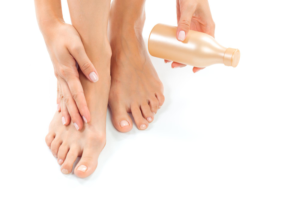Cold sores, which are colloquially called “fever in the mouth,” are a viral infection caused by a virus from the herpesviridae family and are characterized by small blisters on the lip and around the mouth. According to dermatology experts, this disease can be treated with over-the-counter medications and home remedies, such as chamomile and calendula infusions.
“It is caused by herpes type 1 and type 2. It is characterized by small blisters, which usually measure less than half a centimeter in diameter, are pink or translucent in color, and have a clear liquid inside. The definition describes them as drops of water on rose petals,” explains dermatologist Maureen Barahona.
These small blisters usually appear on the lips, gums, tongue, and intraoral mucosa. They also appear, although less frequently, on the genitals. “Previously, it was considered that type 1 herpes was common in the mouth and type 2 in the genitals, but now they are mixed. They are no longer specific to each area,” adds the professional.
The sores usually heal within 15 days. Cold sores are considered a contagious disease because they are usually transmitted by contact, such as kissing. They are also contagious, even if you cannot see the sores.
Cold sore symptoms
The virus is usually acquired in childhood, before the age of five. This infection, being the first, can present symptoms such as fever, general malaise, pain in the gums, head, and throat; then blisters in the mouth.
But recurrent or repeated infections are not as symptomatic, says dermatologist Gabriel Gálvez. That is, you will feel pain or burning, a burning sensation in the mouth or lip area, and then blisters will appear. Because the skin of the mucosa is very thin, these erode and a sore remains that causes a stronger burning sensation.

Most people with this condition have discomfort before the sores appear. For example, they may feel like something is stinging their skin or as if they are being burned by a match. Afterward, the area becomes red and blisters appear, which are about 0.5 centimeters in diameter.
Is a cold sore the same as “fire in the mouth”?
The sensation of “fire in the mouth”, as this disease is called, is only one sensation or symptom caused by cold sores. However, it can also be caused by other diseases such as recurrent aphthous stomatitis, which is of the inflammatory type.
“This symptom is also caused by recurrent aphthous stomatitis, which is not related to the herpes virus, but clinically they are similar because they cause the sensation of heat or fire in the mouth, except that in this case there are no blisters and it is caused by inflammation and low defenses,” says Barahona.
Causes of cold sores
Cold sores are most often caused by the herpes virus type 1. They can be spread through close contact, such as kissing or oral sex, or by sharing eating utensils, razors, and towels, according to the Mayo Clinic.
This disease is most contagious when there are blisters with discharge because the virus spreads easily through contact with infected body fluids. But it can also be transmitted even if there are no blisters since many people do not show symptoms.
Once you have had an episode of infection, the virus remains in your body, which is why you may have new outbreaks. These are caused by stress, cold, heat, hormonal changes, sun exposure, and some types of allergies.
Infection and the first outbreaks are more common during childhood since children tend to touch everything and put it in their mouths. However, outbreaks occur in adulthood, especially after age 40.
Cold sore treatment
It is important to consult a doctor when symptoms are unbearable and when there is increased discharge from the blister or pus, as these are signs of an infection. This occurs because the area is exposed to contamination from other viruses and bacteria.

Cold sores usually go away in about 15 days. There are various types of antiviral medications to relieve symptoms, for example, oral antiviral medications, which will help reduce pain and improve healing, such as Acyclovir and Valacyclovir; also topical medications, which will be beneficial in reducing itching, and pain and helping the blister heal as quickly as possible.
Home remedies to soothe cold sores
Along with treatment, there are natural remedies that help to calm symptoms such as mouth soreness.
- Use chlorhexidine, because it is an antiseptic; hyaluronic acid because it is anti-inflammatory; it is also recommended to avoid toothpastes that contain sodium lauryl sulfate.
- In case of infection, Vaseline can be applied to keep the area moist.
- Chamomile and calendula flower cloths: It is recommended not to use the chamomile stem because it is astringent and dries the skin. In addition, the clothes should be placed cold.
- Garlic clove: Due to its anti-inflammatory properties, it is recommended to break a clove of garlic and rub it on the sore for a minute.
- Peppermint essential oil: The menthol and other ingredients in natural essential oil make it an antiviral. It’s best not to use it if you have an open sore. Add two drops to a glass of water, dip a cotton ball in it, and let it sit on the blister for 30 seconds.























+ There are no comments
Add yours